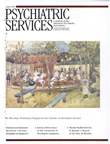Characteristics of effective day treatment programming for persons with borderline personality disorder
Abstract
Day treatment, or partial hospitalization, may have unique advantages for the treatment of patients with borderline personality disorder. Such treatment may offer patients the optimal level of intensiveness and containment, resulting in less regressive dependency and acting-out behavior. To be successful in treatment of patients with borderline personality disorder, a day treatment program should facilitate the patient's need to experience and express affect safely, optimize the program's ability to provide less restrictiveness than inpatient treatment but more sustained and intensive support than outpatient treatment, and use verbal and nonverbal approaches to help patients maintain primary responsibility for their well-being. A length of stay of three weeks allows patients to regain baseline functioning and resume long-term outpatient care. Treatment goals should be clear and resolvable in three weeks.
Access content
To read the fulltext, please use one of the options below to sign in or purchase access.- Personal login
- Institutional Login
- Sign in via OpenAthens
- Register for access
-
Please login/register if you wish to pair your device and check access availability.
Not a subscriber?
PsychiatryOnline subscription options offer access to the DSM-5 library, books, journals, CME, and patient resources. This all-in-one virtual library provides psychiatrists and mental health professionals with key resources for diagnosis, treatment, research, and professional development.
Need more help? PsychiatryOnline Customer Service may be reached by emailing [email protected] or by calling 800-368-5777 (in the U.S.) or 703-907-7322 (outside the U.S.).



